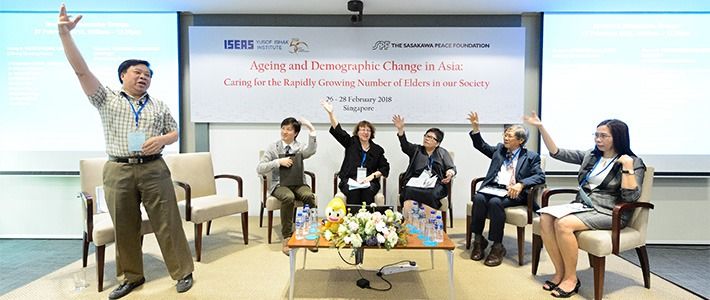
Aging in Japan and Across Asia
A Transformation Toward Care in the Community
Society- English
- 日本語
- 简体字
- 繁體字
- Français
- Español
- العربية
- Русский
Keeping Care Close to Home
At the first Asian Impact Dialogue on Ageing and Demographic Change in Asia, held over several days in late February 2018, participants from nine Asian nations discussed ways to address the issues brought about by the rapid graying of their populations. The gathering’s four panel discussions shed light on various facets of the problems that the countries of Asia—forerunners in the aging of society that is increasingly affecting economies around the globe—are seeking to solve today.
“Community-Based Care” was the topic of the dialogue’s third panel session. Here the participants shared a wealth of successful approaches from their home countries. An overview of the panelists’ best practices and insights is presented below.
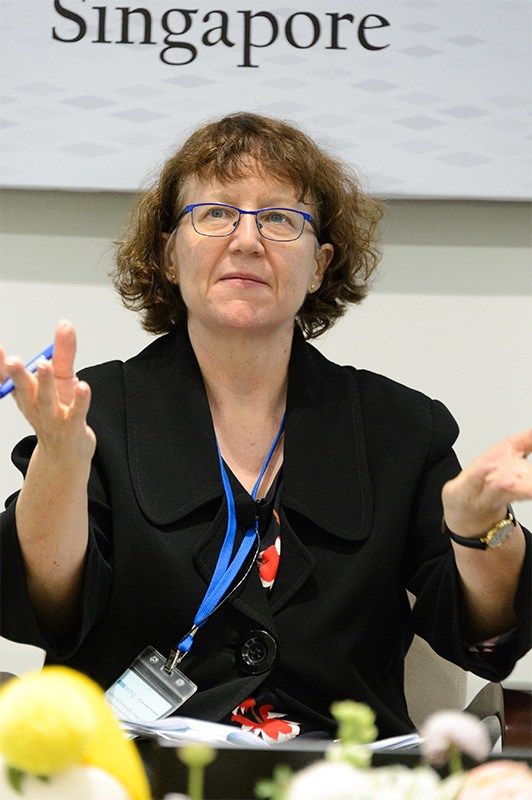 Katherine Anne Silburn urged transformations in ways of thinking as a vital first step.
Katherine Anne Silburn urged transformations in ways of thinking as a vital first step.
The session was led by Katherine Anne Silburn, the coordinator for equity and social determinants at the World Health Organization’s Regional Office for the Western Pacific, located in Manila.
Silburn summarized what the workshop was all about: “We need to make transformations in the way we think about aging and older people—how we think about these individuals as resources, as having dignity, as people we really need to treasure. These are transformations in how we think about care, so it is centered around older people. Transformations in thinking about investment in older people, rather than thinking about everything being a cost. Transformations in how we think about the workforce and caregivers; the relationship between informal and formal care; the roles of government and society. Transformations in thinking even about things like technology and robotics.” As she noted, the discussion at the gathering so far had already produced rich insights into potential models to build on and innovations already seen in the field.
“We also understand that today we work in very complex environments with many players,” continued Silburn. “That provides another set of challenges around how we develop new modes of governance to make sure that everybody works together, and that we mobilize resources in the best and most efficient way to provide the most excellent care that we can. It’s a transformation to providing care in-place for older people in the community.”
Knowledge of Needs Makes for Better Care
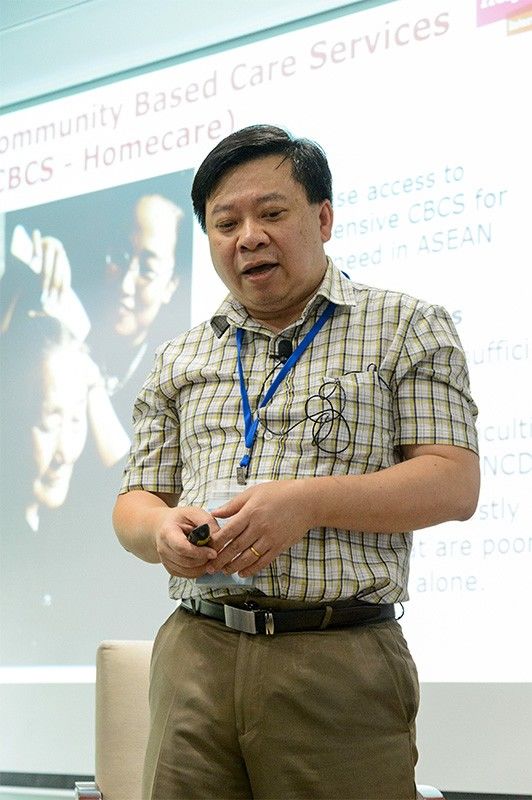 Quyen Tran noted the importance of community input and involvement in the care process.
Quyen Tran noted the importance of community input and involvement in the care process.
The session participants took the discussion from there. Quyen Tran, as regional program advisor for HelpAge International in Chiang Mai, Thailand, handles duties that take him around the ASEAN nations where he has helped to administer a range of programs configured to fit each specific country and community. He shared his trove of sometimes surprising community-based care knowledge.
“What are the lessons learned? The best age group for the volunteers was from forty-five to sixty-five. They have the time. Their children have flown the nest, they are retired or semiretired, they are much less mobile than the older population, and most of them have experience taking care of their mothers, their grandparents, or even their spouses.” Another key factor is the smaller age gap, noted Quyen. Ideally, caregivers are people living very close to the client, within walking distance—a factor that makes them more aware of the needs of the person requiring care.
Quyen also emphasized the importance of a low caregiver-to-client ratio as a means of insuring sustainable care relationships and the companionship resulting therefrom.
The Importance of Staying Connected to Community
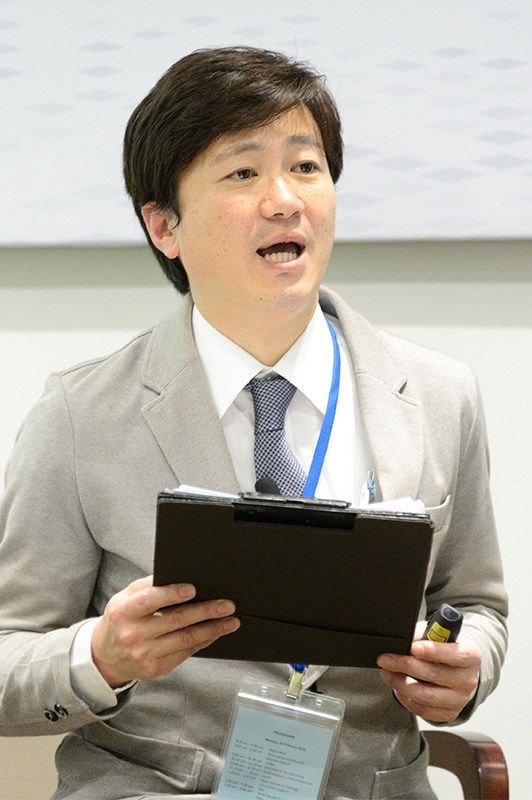 Kawamura Shun’ichi shared information on his group's successful activities in Japan.
Kawamura Shun’ichi shared information on his group's successful activities in Japan.
Kawamura Shun’ichi, president of Ancre, Japan’s Dementia Prevention and Support Research Institute, gave details about his group’s “Mimamori Keychain” program to help identify elderly persons who wander off and return them home. Seniors’ registered information, keychains bearing emergency contact information, and a broad network of companies and other participants are all part of a system that assists the elderly who go astray. More than 40,000 elderly seniors are currently using the service. In this way, said Kawamura, their freedom of movement and freedom of association can be preserved. “No matter how old you are, there are places you want to go. There are places you can easily visit, and there are friends waiting for you,” he explained.
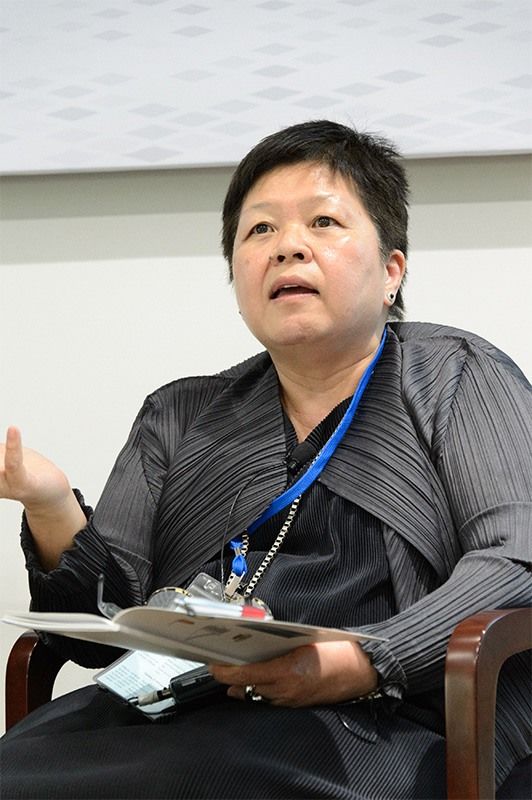 Peh Kim Choo underscored her presentation by leading a visit to a facility where its ideas are put into practice.
Peh Kim Choo underscored her presentation by leading a visit to a facility where its ideas are put into practice.
The Tsao Foundation CEO—panelist Peh Kim Choo, also the director of Singapore’s Hua Mei Centre for Successful Ageing—noted: “In the last two years, there has been a very interesting movement. There has been a shift to looking at community-based care more from a population health perspective. . . . This community-based care is actually what we implemented in our project in Singapore’s Whampoa district.” She would later lead workshop attendees on a tour of ComSA, the Whampoa Community for Successful Ageing, where they met and talked with staff and clients.
Making Help Available for All
For Sawang Kaewkantha, executive director of the Foundation for Older Persons’ Development in Chiang Mai, Thailand, “The key to success is the participation of the community. This leads to sustainability.” Like many of the workshop’s assembled caregivers, he stressed the importance of access to care for all levels of society, including those one might imagine are already cared for, but who may not be. “We see that illness is not happening only to the poor, but also to the well-off families. So we developed a social enterprise by using our experience in providing care and services for the older people, training caregivers for three months. And then we provided caregivers to the better-off families.”
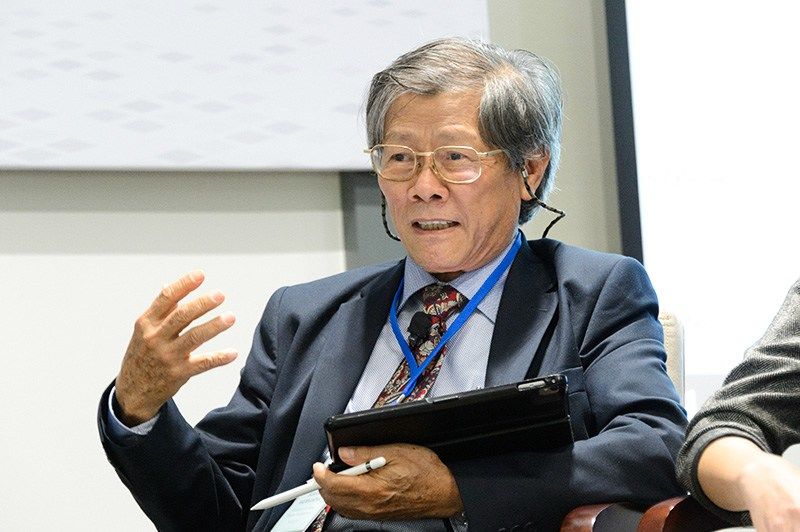 Elder care is needed in all strata of society, said Sawang Kaewkantha.
Elder care is needed in all strata of society, said Sawang Kaewkantha.
Executive Director Emily Beridico of the Coalition of Services of the Elderly (COSE) in Quezon City, the Philippines, outlined for attendees the wide range of services her group provides, including innovative approaches to “widening” the community within reach. She described COSE’s new outreach effort. “We piloted mobile services during Typhoon Haiyan in four municipalities. This is the provision of basic healthcare services for older persons—particularly those living in remote, rural areas—to make health services more accessible, especially to those with physical and mental limitations.” In partnership with the local government, COSE hired nurses riding motorbikes to reach remote areas.
“What is the role of government-supported community-based care?” asked Quyen toward the end of the panel session. “In this region, very few governments are investing in community-based care. With the exceptions of Thailand and Singapore, in other countries the investment is minimal.” This is not ideal, he noted. The government’s role is vital in providing funding guidance, guidelines, and support and encouragement for actors including NGOs, communities, and the private sector as they invest in community-based care.
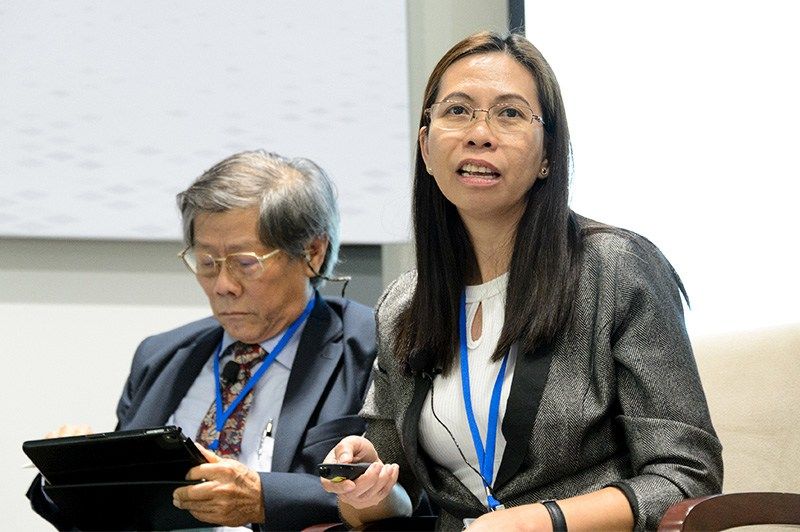 Community outreach is key, according to Emily Beridico.
Community outreach is key, according to Emily Beridico.
He also urged care recipients to become more involved. “If you are registered, your visibility within the government and the community will increase, so you will have greater access to service, to partnership, and to collaboration with others to improve your care.”
The panel session was only scheduled to take 90 minutes, not nearly enough to fully accommodate the rich exchange of information among panelists and attendees. Katherine Anne Silburn reluctantly adjourned the session, saying, “I’d like to thank everyone on the panel and in the audience for a really fascinating discussion. I think actually you’ve raised more questions than you’ve answered, so hopefully this conversation can continue.”
(Originally written in English by Steve Ross of Orient News Network. Banner photo: Session participants try out stretching exercises that can be done by elderly care recipients. All photos © Sasakawa Peace Foundation.)